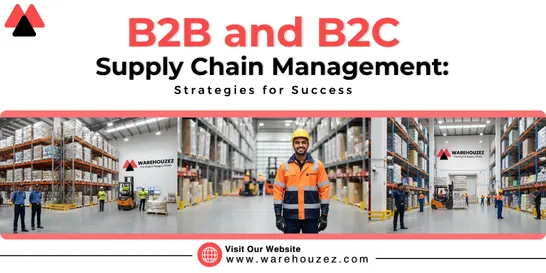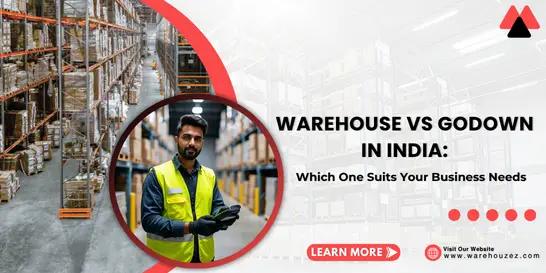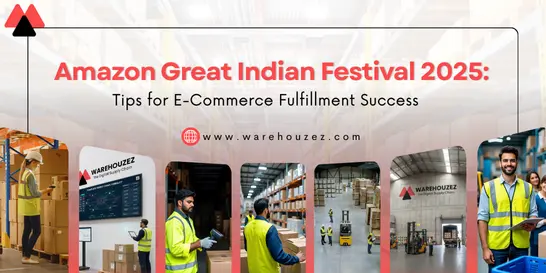Warehousing Challenges for D2C Brands
Top Warehousing Challenges D2C Brands Face and How to Overcome Them
Why do D2C brands of today struggle whenever demand rises? Well, it’s most often because of their warehouses.
Direct-to-consumer (D2C) businesses promise speed, personalization, as well as convenience. But for every perfectly packed order and quick delivery, the supply chain must run smoothly.
When warehousing and fulfillment stumble, even the most successful brands end up losing customer trust. That is why understanding D2C warehousing is not just about storing goods, it is about building a stronger supply chain that supports customer satisfaction.
In this particular blog post, we will highlight the biggest warehousing challenges D2C brands face and how to overcome them with smart, strategic solutions. So, let’s get started!
Understanding D2C Fulfillment
D2C fulfillment fundamentally refers to the process of receiving, storing, picking, packing, processing, and shipping products directly to the customer/ end user. Unlike traditional retail, there are no wholesalers, middlemen, or intermediaries involved. That means warehousing plays a prominent role in shaping the entire customer experience.
The most important aspects of D2C fulfillment include:
- Inventory management: Stock levels must always be updated and accurate in order to avoid overstocking or out-of-stock situations.
- Order processing: Orders should be picked and packed without any delays and errors.
- Last-mile delivery: Customers expect faster shipping than ever before.
- Reverse logistics: Handling returns efficiently is all the more crucial in e-commerce.
All in all, D2C warehouses are not just storage spaces. They are fulfillment hubs that deliver excellent customer experience.
Common Warehousing Challenges in D2C Businesses
Running a D2C warehouse is certainly not an easy task. Now, we will list out some of the most pressing challenges direct-to-consumer brands face today:
1. Inventory Management Errors
Stockouts and overstocking happen to be one of the most common issues that every business, be it B2B, B2C, D2C, or e-commerce companies deal with. Without real-time visibility, brands either lose sales due to empty shelves or lock up cash in excess stock. Both ways, they struggle with losses.
2. Higher Fulfillment Costs
Ever-rising storage fees, labor costs, and last-mile delivery charges put immense pressure on margins. For startups and mid-size D2C brands, this can make scaling indeed difficult.
3. Meeting Delivery Expectations
Customers of today expect same-day or next-day delivery. Slow order processing or poor warehouse layouts lead to missed deadlines and unhappy buyers.
4. Handling Returns (Reverse Logistics)
Returns in e-commerce can reach up to 30% of total orders in some industries, like fashion and lifestyle. Managing reverse logistics without proper policies and tech systems can result in time wastage, increased overhead costs, and damaged customer trust.
5. Seasonal Demand Fluctuations
Festivals, sales, and sudden market shifts often create spikes in demand. D2C warehouses without extra flexible storage capacity end up struggling during these peak periods.
6. Limited Use of Technology
Many small D2C brands still use spreadsheets for manual record keeping and tracking. But let’s not forget that without utilizing state-of-the-art tech like warehouse management systems (WMS), both accuracy and speed can get compromised.
Practical Solutions to Overcome D2C Warehousing Challenges
For every challenge, there has to be a practical way forward. Now, we will share some strategies, tips and tricks to help you overcome these warehousing issues:
Budget Planning with a Focus on Cost Optimization
- Adopt multi-client warehousing to share costs with other brands.
- Use on-demand warehousing to scale up or down during peak seasons.
- Automate repetitive things like receiving, storing, picking, packing, scanning and labeling to save labor costs.
Efficient Inventory Management
- Apply demand forecasting tools to predict peak season changes.
- Follow ABC analysis to prioritize fast-moving products and implement just-in time inventory (JIT) approaches to avoid stockouts as well as excess holding costs.
- Use live inventory apps and warehouse management systems (WMS) for real-time stock visibility.
Flexible, On-Demand Warehousing for Handling Spikes in Demand
- Adopt on-demand storage to expand capacity during festive seasons.
- Use regional warehouses that are located closer to customers to reduce shipping time as well as costs.
Faster Order Fulfillment
- Organize warehouses with well-optimized layouts (zoning, slotting, etc.).
- Train warehouse staff for efficient picking and packing.
- Use automation like conveyor belts or robotic picking in large setups.
Hassle-Free Returns/Reverse Logistics
- Set up dedicated return zones in the D2C fulfillment warehouse.
- Partner with 3PL providers who specialize in providing reverse logistics services.
- Resell, refurbish, or recycle returned items to reduce any kind of losses.
The Transformative Role of Technology in Modern D2C Logistics
When it comes to D2C warehousing, tech integration is no longer a choice but a growth driver.
Let’s take a look at some examples of tech-driven solutions:
- AI and Data Analytics: Helps forecast demand and optimize stock levels.
- Automation and Robotics: Speeds up order picking and reduces all sorts of errors.
- Warehouse Management Systems (WMS): Provides real-time inventory tracking and streamlines daily operations.
- Internet of Things (IoT): Smart sensors track goods, temperature, and shelf life.
Brands using tech-enabled 3PL warehouses can cut costs, improve accuracy, and retain customers more effectively.
Why Partnering with a 3PL Warehousing Company Makes Sense
Not every D2C brand can manage warehouses efficiently on its own. This is why outsourcing to 3PL companies can prove to be a game-changer.
Let’s list some of the most significant benefits of 3PL warehousing for D2C brands:
- Expertise: Access to trained staff and tech systems.
- Focus on Core Business: Brands can focus on marketing and product innovation while logistics experts handle storage and delivery.
- Nationwide Reach: Warehouses in India bring products closer to customers.
- Scalability: Expand quickly without investing large amounts of money in infrastructure.
Many successful D2C brands nowadays depend on 3PL partners to stay competitive and meet ever-changing customer demands.
Concluding Remarks
D2C warehousing is both a challenge and an opportunity. Brands that fail to manage inventory, costs, and last-mile deliveries risk losing customers. But those who embrace technology, flexible storage models, and expert 3PL partners can scale faster and thrive.
In a marketplace that is so competitive, efficient warehousing is not just considered a back-end function, it is the front line of customer experience.
FAQs
Q1. What is the biggest challenge for D2C brands?
The biggest challenge is managing inventory accurately. Stockouts impact sales, while overstocking increases costs. Many brands struggle without real-time visibility.
Q2. How can D2C brands reduce fulfillment costs?
Let’s learn some tips and tricks that help D2C brands lower down fulfillment costs.
- Automate processes like scanning, picking, and packing.
- Consider outsourcing to experts.
- Partner with 3PL warehousing companies who are pros in everything like storage, logistics, fulfilment, and returns .
- Use shared or multi-client, shared warehouses.
Q3. Why is reverse logistics so important in D2C?
Reverse logistics is necessary because returns are common in D2C. If not managed well, they increase costs and frustrate customers. Smooth return processes improve customer retention in D2C businesses.
Q4. How can technology improve D2C warehousing?
Technology like AI, IoT, and WMS gives brands better visibility, faster processing, and demand forecasting. Automation also reduces errors and improves operational efficiency.
Q5. Should every D2C brand work with a 3PL provider?
Well, not each and every brand needs a 3PL partner, especially when it is in its early stages. But as demand grows, outsourcing to 3PL warehousing companies helps reduce costs, scale faster, and enhance customer experience.



